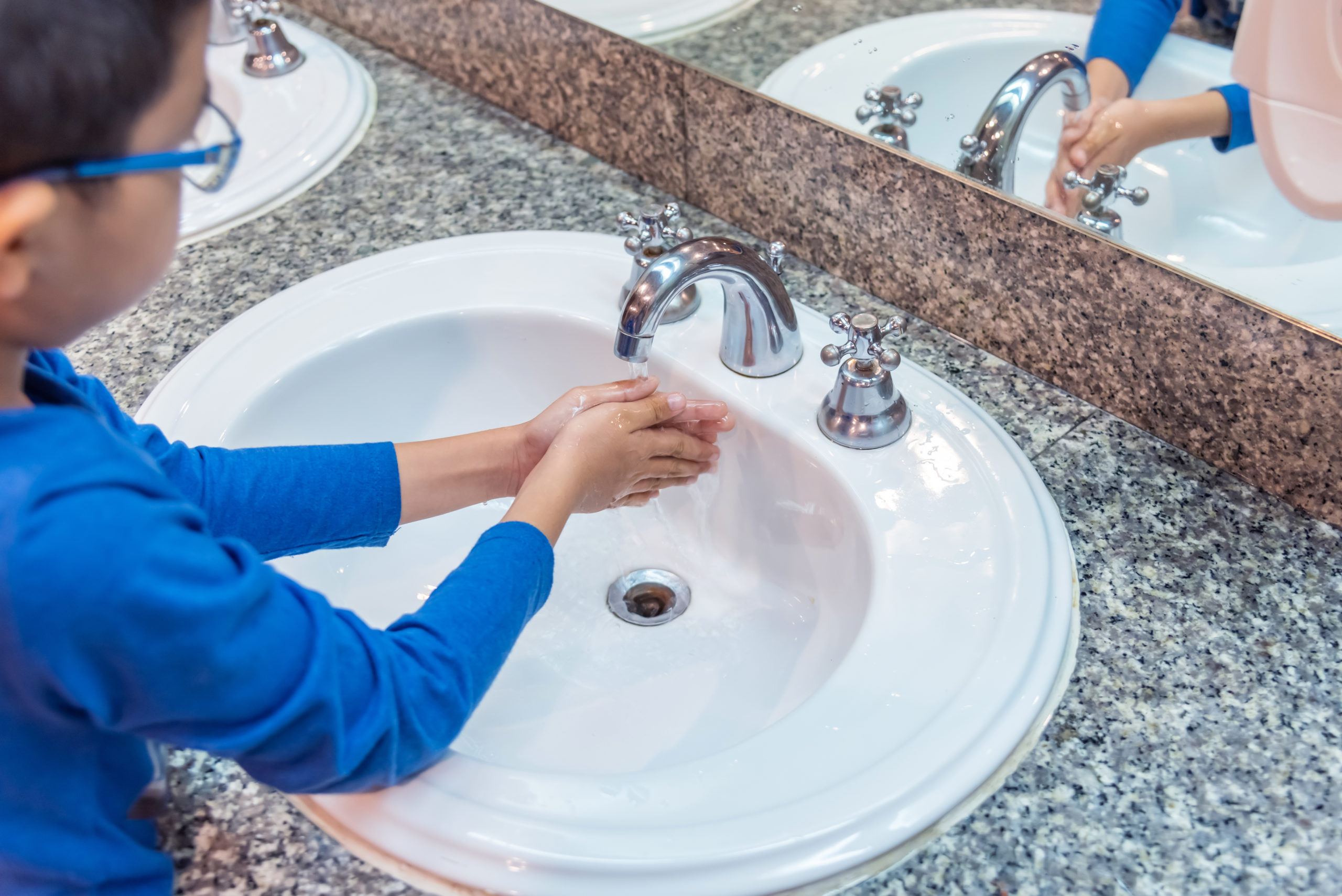By the time your child is 4 years old they should be able to wash and dry their hands on their own. Younger children will need help, and sometimes older children might need assistance and/or supervision. But even adults don’t necessarily follow standard hand washing hygiene, despite hand washing being the number one way of reducing the spread of virus and bacteria.
A recent study from the Massachusetts Institute of Technology estimates that improving hand washing at airports could slow global disease spread by almost 70%. Current data suggests that only about 20% of people in airports have clean hands, mostly due to not washing hands (or not thoroughly washing hands) after using the bathroom. This study was done before the recent coronavirus outbreak, but the findings would apply to any disease outbreak.
When and how should you wash your hands?
The University of Rochester Medical Center has simple guidelines:
When to wash before:
- Eating
- Touching mouth, eyes, or nose
- Touching a cut or scrape
When to wash after:
- Going to the bathroom
- Playing with pets or other animals
- Touching pet food or treats
- Being on playground equipment
- Being close to a person who is sick
- Touching a dirty diaper
- Touching garbage
4 steps to clean hands
- Get wet and soapy. Get your hands wet in clean water. Put soap on your hands and make suds.
- Rub. Rub rub, rub your soapy hands together long enough to sing “Happy Birthday” in your head twice. Clean your palms, the back of your hands, and between your fingers. Don’t forget to clean under your nails. Nails can trap dirt and germs.
- Rinse. Hold your hands under clean, running water. Rub them to rinse them fully.
- Shake and dry. Shake your hands a few times, then dry them with a clean towel or hand dryer. Done!

